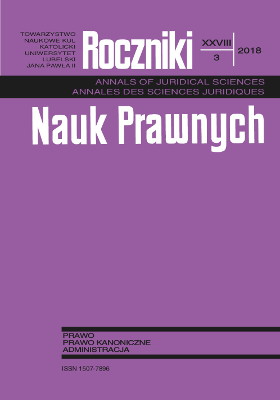Geneza Polskiej Krajowej Kasy Pożyczkowej i jej działalność na ziemiach polskich
The Origin of the Polish National Loan Fund and its Activity on the Polish Lands
Author(s): Eliza Komierzyńska-OrlińskaSubject(s): Law, Constitution, Jurisprudence, History of Law, Commercial Law
Published by: Towarzystwo Naukowe KUL & Katolicki Uniwersytet Lubelski Jana Pawła II
Keywords: 10.18290/rnp.2018.28.3-5
Summary/Abstract: The idea of setting up the Bank of Poland as the central bank of the Second Republic of Poland and introducing a new currency appeared just after Poland regained its independence. At the beginning of 1919, it was believed in economic circles that one of the first moves of the new government should be to set up a new issuing bank and replace, by this bank, the existing Polish National Loan Fund, which institution appeared on Polish lands in an extraordinary situation – during the First World War and which, despite the original intentions (both German and Polish), survived 7 years and evolved after the end of the war into the first issuing bank of an independent Polish state.The Polish National Loan Fund, created by the Germans as an issuing institution under the regulation of 9 December 1916 about the “Polnische Landes Darlehnskasse” was granted the privilege of emitting a new monetary unit under the name “Polish marka”. The German authorities had different goals in setting up a new issuing institution – first and foremost, it was about limiting the area of circulation of the German monetary unit called “marka” and creating an instrument that would draw in the occupied territory of Poland to finance the war, contrary to the assurances of the occupying authorities that the Polish National Loan Fund will be the institution supporting the economy and banking of the country – planned to be created after the end of World War I of the Kingdom of Poland.
Journal: Roczniki Nauk Prawnych
- Issue Year: 28/2018
- Issue No: 3
- Page Range: 59-82
- Page Count: 24
- Language: Polish

